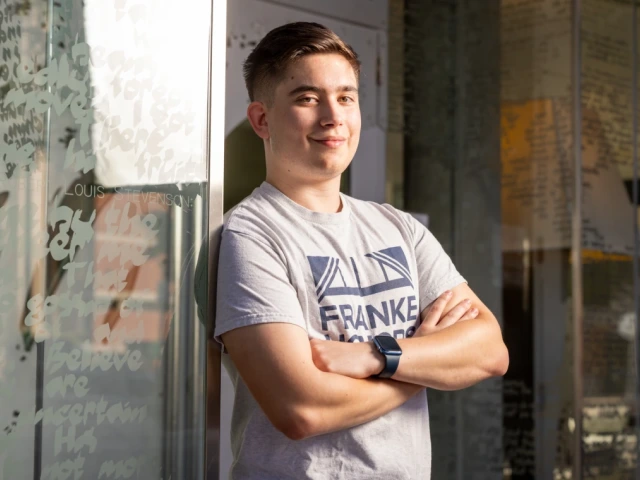AI in Healthcare Simulation Education and Training
We build smart learning tools for future clinicians: virtual patients you can actually talk to, AI that scores your interviews or sutures, and dashboards that make feedback instant and clear. ASTEC is our high-tech home base but our focus is with the AI projects we make below.
Goals
At AI in Healthcare Simulation Education and Training, we are more than a research team—we are an innovation lab shaping the future of medical education. Based at the Arizona Simulation Technology & Education Center (ASTEC), we blend cutting-edge AI, immersive simulation, and human-centered design to prepare the next generation of healthcare providers.
Our mission is to redefine patient-provider interactions through AI-driven tools that make learning smarter, faster, and more personalized. Students on our team are not just observers—they design, build, and test systems that:
- Improve clinical communication through AI tools that coach, score, and give real-time feedback on interviews, motivational interviewing, and interprofessional teamwork.
- Enhance hands-on skills with AI-powered assessment systems for suturing, procedures, and clinical decision-making.
- Streamline case creation with AI that generates realistic patient profiles and scenarios in minutes, not hours.
- Simulate real-world encounters using 2D and 3D virtual patients that respond dynamically to tone, language, and clinical reasoning.
- Integrate and connect learning via custom platforms that unify all AI tools, case libraries, and performance data in one easy-to-use system.
- We take a design thinking approach, applying principles from adaptive teaching, machine learning, cognitive science, human-computer interaction, and mHealth. The result: a collaborative, fast-moving environment where students directly shape technologies that can improve patient outcomes, provider feedback, and healthcare training worldwide.
In short: We are building the AI-powered simulation systems that tomorrow’s healthcare professionals will rely on—and our students help create them today.
Issues Involved or Addressed
- Artificial intelligence in medical education
- Virtual and augmented reality training environments
- AI-powered communication and interview analysis tools
- Automated case generation and patient scenario creation
- AI-assisted skill assessment and feedback systems
- Interprofessional team training and simulation
- Human-patient simulators
- Procedural task trainers
- Laparoscopic surgery towers
- Anatomage digital dissection
- Full A/V integration and learning management system
What We Build
AIMHEI
Analyzes student–patient transcripts line by line, scores performance, and delivers rich coaching feedback for learners and faculty.
Medical Case Creator (MCC)
Upload a file or paste text; AI completes a full simulation case template. Faster, more accurate scenarios—ready for virtual patients.
2D Virtual Patient
Screen-based interviews with dynamic responses. Great for low-bandwidth classrooms. Fully integrated with AI evaluation tools.
3D Virtual Patient
Immersive, speech-enabled encounters in realistic 3D spaces. Connects to MCC and other tools for seamless curriculum delivery.
Suture Analysis System
Snap a photo of a suture pad—AI scores technique, flags errors, and suggests resources. Built with computer vision.
Procedural Assessment
AI + checklists + vision tracking to evaluate procedures (injections, exams, etc.) and deliver instant, targeted feedback.
Motivational Interviewing (MITI 4.2)
Assesses empathy, collaboration, and change talk. Co-developed with the Andrew Weil Center for Integrative Medicine.
Debriefing & Dashboards
Faculty-facing tools that visualize transcripts, timing, tone, and objectives so debriefs are faster, deeper, and data-driven.
Interprofessional Team Skills
Simulations built on TeamSTEPPS to improve teamwork, communication, and leadership across disciplines.
Magic Kingdom
Central content hub storing all media (text, audio, 3D, video) that powers our AI tools and virtual patients.
Methods and Tech
- Artificial intelligence development and machine learning integration
- Natural language processing for medical communication analysis
- Automated content generation for simulation cases and training materials
- Custom software and application development for medical education
- Cloud-based data management and performance analytics systems
- Virtual/augmented reality and game-based systems (Oculus, Vive, Hololens)
- Casting/molding (silicones, gelatins, urethane, and polymers)
- 3D printing (SLA/extruder printers)
- Electrical engineering, sensors, and motion tracking
Academic Majors of Interest
Who Can Join: Open to all majors and skill levels—no prior experience required.
Ways to Get Involved:
- Enrollment Credit – Join the AI VIP course and earn graded research units.
- Honors Thesis – Center your thesis on AI in medical simulation.
- Capstone Project – Build an app, model, or study that meets your program’s capstone requirements.
- Volunteering – Contribute your time and skills without course credit.
Application Process
This team is near capacity for Summer and Fall 2025.
If spaces become available and you would like to be considered to join the team on a first-come, first-served basis, please complete this Google form.


